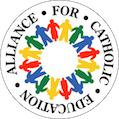Why Students Need a Third Language
.jpg)
I had a difficult choice: Spanish, French, or Latin.
Those were my choices for my high school’s second language requirement. If I had to make the choice in 2016, I would say that an important option was missing—not Chinese or German, although those could be useful—but rather a “third language” option. I should be able to choose a computer programming language, and so should our students in Catholic (as well as public, private, and charter) schools.
The term “21st-century skills” is thrown around quite loosely these days, often referring to skills like collaboration, communication, and critical thinking. But, if we’re being honest, these skills were just as important throughout the 20th (and in many cases the 19th and 18th) century for our youth’s education. The "three language" approach, however, seems to address significant educational needs for our increasingly interconnected lives.
Catholic school students need to communicate effectively in their native language and, as technology has fostered a more global society, learn a second foreign language as an important cultural and intellectual tool.
Still, this is not enough.
Computer programming languages like Python, Java, and Scratch need to be a third language option that all students have the opportunity to explore.
Coding languages are imminently important for several reasons. First, think about all of the devices, apps, and technology that you use throughout the day: smartphones, tablets, laptops, cars, and even contemporary washing machines. These technologies require a hidden logical structure developed by people like you and me. Programming has become an essential skill to navigate our technology-centric lives. And yet, it is predicted that in the next ten years, the United States will come up short on filling industry demand by more than one million programmers.
Second, programming provides a route for children to create and define their futures. Coding languages provide nearly infinite paths for developing programs. From games to social media to tools that chart and monitor local water quality, give us an option to pray remotely with others, or even prepare for confession—programming provides a platform for children to be a force for good in the world, increasing their opportunities and capacity to live out the call of Catholic social teaching.
The White House and Congress have recently recognized the importance of this line of thinking with the announcement of a $4 billion bill targeting increased formal opportunities for coding in schools. Despite the projected shortfall for programmers in the next decade, and despite a stark difference between the average 1,000 hours spent in school per year and the 4,000 hours spent on digital media in their spare time, children need more opportunities to learn a third language through coding.
The need is great and the attainment of coding skills has its own intrinsic value. So next time you or someone you know is faced with a course scheduling dilemma, don’t stop at choosing a second language, go ahead and sign up for that third language and get started down the path of learning how to code.
Begin right now with an hour of code at Code.org and join over 213 million of your closest friends who have already started unlocking a language crucial to the 21st century.



